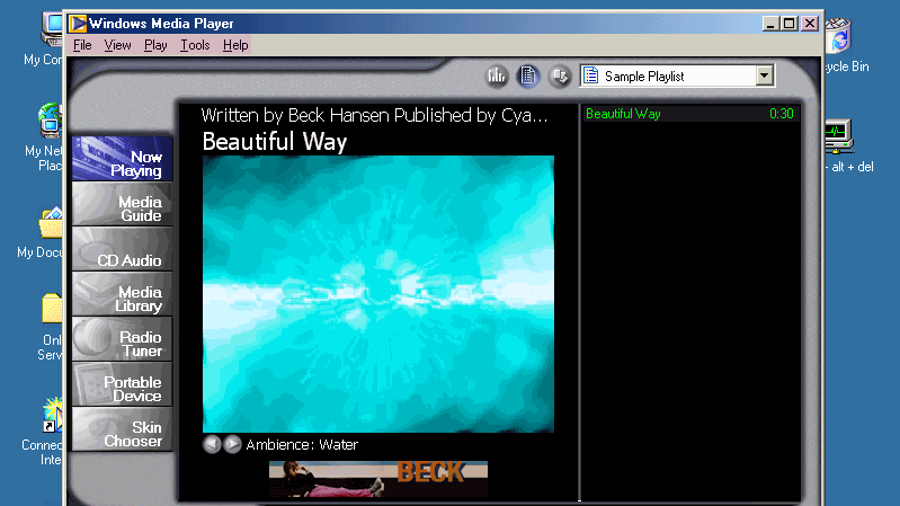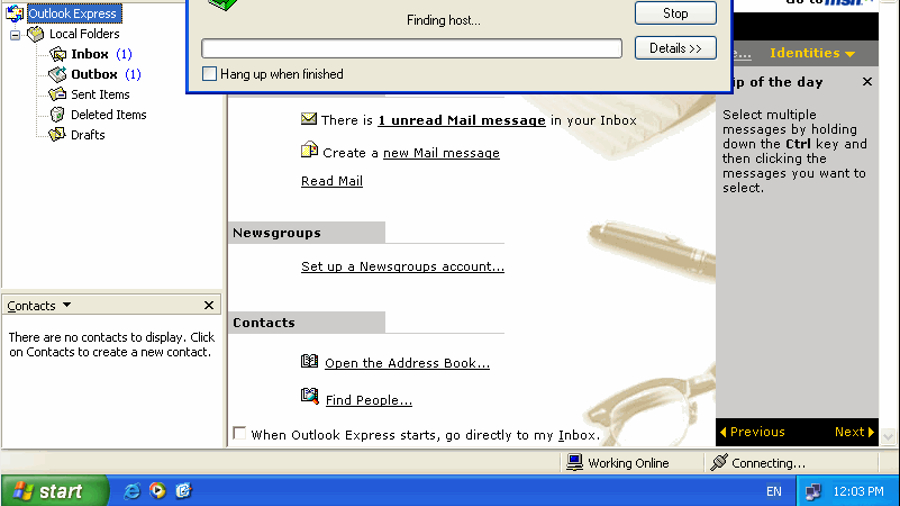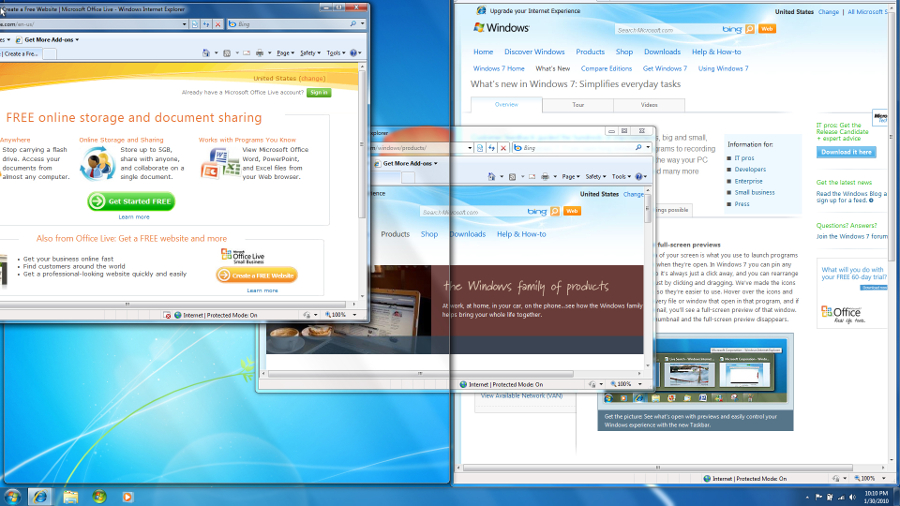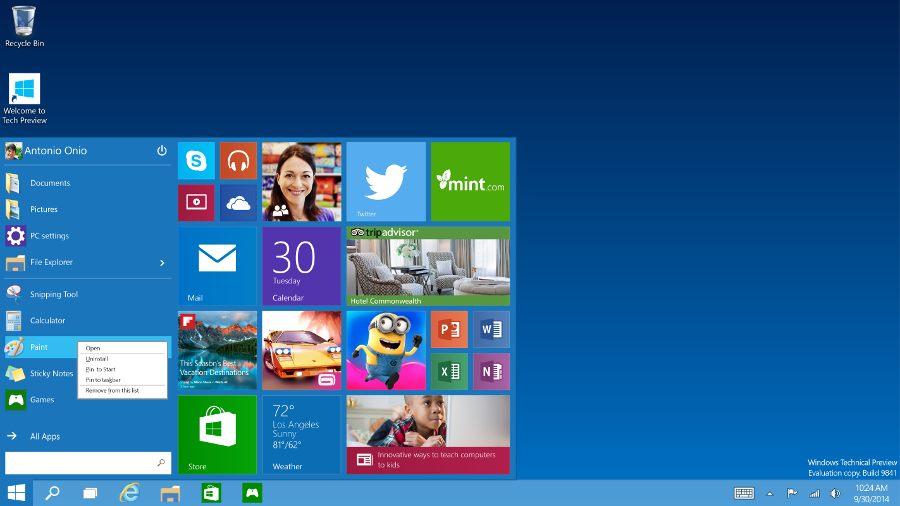Windows 95 to Windows 10: 20 years of Windows in pictures
Microsoft's ubiquitous OS has had its fair share of ups and downs throughout the years


Introduction
If you cast your mind back 20 years ago, Windows 95 was a huge affair at the time. Unveiled on a 12-acre field in Microsoft's Redmond Campus, it took 20 days of preparation and over 200 people to make it happen.
The event was watched via satellite across the world by over 70,000 people, which may not sound like much compared to your average cat video on YouTube, but for an operating system launched in the mid-nineties it was massive.
- OurWindows 10 reviewandWindows 10 featuresthat will make you upgrade
Fast forward twenty years to this year's Windows 10 launch, which has been streamed across the globe with live music. Today we have Microsoft staff in stores, and users can even get their questions directly answered by their digital personal assistant, Cortana.
Take trip down memory line by perusing a potted history of the last twenty years of Microsoft Windows.
Just click through the gallery using the arrow in the bottom right.
Here's some of our other great Windows 10 coverage so far:

1. Windows 95
Windows 95 marked the operating system's transfer from an operating system that was essentially piggybacking MS-DOS to a true multimedia centre. It was ready for the internet too. This philosophy was to continue for the next 20 years all the way up to the present day and the touchscreen capabilities of Windows 10.
In an interview on BBC Radio 4 Brian Eno said of his opening theme for Windows 95, "I wrote it on a Mac. I've never used a PC in my life; I don't like them." Despite Eno's reservations, 95 was a revelation that brought about the Start Menu.
Instead of a cluster of icons hidden on the desktop behind open programs, the Start Menu could be accessed at anytime. The Taskbar also made its debut, and played a big part in making switching between open tasks more intuitive.

2. Windows 98
Windows 98 didn't look all that different to 95, but it was a much more stable beast, much more internet-ready and had better gaming capabilities.
Back in 95, many games still ran via MS-DOS as it could achieve higher performance and resolution in many cases. 98 also brought better MIDI and sound compatibility. The OS also shipped with DirectX, which was just an add-on in Windows 95, as standard.

3. Windows 2000 Pro
Released in 1999, Windows 2000 Pro was the workhorse of Microsoft. Praised for its stability, it was designed to work on servers and is still used today in businesses around the world.
It also introduced a number of Accessibility Options for people with visual and auditory impairments. It reached the end of its lifecycle in 2010, but you'll still find it running ticket machines, timetable screens and even some banking equipment.

4. Windows ME
ME, the difficult second album. Released as Home User companion to 2000, it was found living up to '98 and 2000's reputations difficult. Riddled with bugs and unreliable install processes, PC World dubbed it as the 'Mistake Edition'.
Part of the problem was the newly implemented System Restore (a program that backed up the whole of the OS in case anything went wrong), which was buggy and took up valuable disk space.

5. Windows XP
Codenamed Whistler, Windows XP is where Microsoft transferred from their blocky grey design to a new cute, cuddly and rounded design.
It came as a shock to many, feeling almost childlike with the sky blue Taskbar and the familiar green grass that adorned the default backdrop - was this really an operating system or a kid's VTech?
As it turned out, there was a lot more under the hood. It was more of a serviceable gaming platform, and saw DirectX come into its own.
XP could run games that are now thought of as classics such as Half Life 2, Star Wars: Knights of the Old Republic and World Of Warcraft. It was a golden age for Microsoft PC gaming.

6. Windows Vista
Vista's primary stated function was to improve the security of Microsoft's OS. Hackers and the internet were getting increasingly more sophisticated and Microsoft was at the forefront of being hacked into.
XP's main criticism lied in it susceptibility to security breaches. However, Microsoft almost shot themselves in the foot by suffocating Vista in layers of DRM protection which in turn required high system requirements to run. It wasn't a failure but many users were very glad when Windows 7 was released.

7. Windows 7
A mere three years after Vista, 7 brought Microsoft a sigh of relief. The OS was stripped down and was less processor-heavy when running. The company also streamlined the taskbar, making it clearer to understand and use.
The glassy look of windows, known as Aero (which incidently stands for Authentic, Energetic, Reflective, and Open), was kept from Vista , but a few key features were added - such as Aero Snap.
Snap maximised a window into the half of the screen it was pulled into. It was an incredibly useful function that OSX has yet to emulate - although you can install third-party apps to get the same functionality.

8. Windows 8
By the time Windows 8 game out, Apple had been making inroads over the years into Microsoft's dominance of the home OS market. The company's iPads had become ubiquitous with tablet computing and Android had cornered the budget market, leaving Microsoft to make a move into touchscreen territory or be left behind.
In reply, Microsoft created its Surface tablet, which coincided with the release Windows 8. Of course the only problem with this plan was that many of WIndows users didn't have a Surface - they were always going to be desktop or laptop based. Designed for touchscreen computers, Windows 8 left traditional keyboard-and-mouse users out in the cold.

9. Windows 8.1
The touchscreen features of Windows 8 were a hinderance for many users, who were desperate to make the switch back to a traditional desktop. It's not to say that the OS was a failure - far from it. Windows 8.1 addressed these issues to a point by re-introducing the ability to boot to the desktop. It was installed on over 60 million computers in January 2013 alone.

10. Windows 10
So here we are: 20 years of Windows since Eno's six second watery intro to Windows 95. Windows 10 is far more tailored toward traditional desktop users, reintroducing the Start menu and Taskbar while keeping with Windows 8's touchscreen tiles and notifications sidebar.
There's also no Internet Explorer, which has been upgraded to the much more easily pronounceable Edge, which in some tests has rivalled Google's Chrome browser on speed. Much as OS X is available free to anyone with a compatible Mac, users of Windows 7 or 8.1 can upgrade free of charge for a limited time.
It remains to be seen if this hybrid of touchscreen and traditional desktop will work in the long term, but it seems to be where all OSs are (and should) be heading. There's interesting times ahead to be sure.
- Now why not check out ourWindows 10 reviewandWindows 10 featuresthat will make you upgrade
Get all the latest news, reviews, deals and buying guides on gorgeous tech, home and active products from the T3 experts

For 25 years T3 has been the place to go when you need a gadget. From the incredibly useful, to the flat out beautiful T3 has covered it all. We're here to make your life better by bringing you the latest news, reviewing the products you want to buy and hunting for the best deals. You can follow us on Twitter, Facebook and Instagram. We also have a monthly magazine which you can buy in newsagents or subscribe to online – print and digital versions available.
